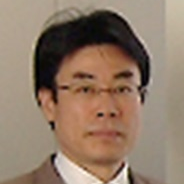Development, Characterization and Evaluation of Advanced and Sustainable Cement-Based Materials
A special issue of Buildings (ISSN 2075-5309). This special issue belongs to the section "Building Materials, and Repair & Renovation".
Deadline for manuscript submissions: 25 May 2024 | Viewed by 3866
Special Issue Editors
Interests: geopolymers; waste management; decision analysis; circular economy; X-ray microtomography
Special Issue Information
Dear Colleagues,
The building and construction industry is responsible for massive consumption of natural resources, along with significantly high embodied energy and greenhouse gas emissions. This Special Issue focuses on the development of cement-based materials and pertinent technologies which will advance the sustainability of the building and construction industry. The topics shall highlight not only the advances in material science and engineering that contribute to the development of future climate-smart construction materials, but also the potential application of life-cycle sustainability assessment of products and structures that incorporate cement. Contributions from academic researchers and practitioners in the form of original research papers, case reports, short communications and review papers are encouraged to stimulate discussion on sustainable materials design from conception and application to structures, as well as their evaluation throughout their complete life cycle. This Special Issue thus aims to present a collection of articles on topics including but not limited to the following:
- Synthesis of novel cementitious materials (e.g., lightweight geopolymer/concrete, fiber-reinforced alkali-activated material, etc).
- Characterization techniques and modeling with advanced microscopy and spectroscopic techniques, X-ray microtomography, among others.
- Novel experimental techniques for the testing of materials, products, and structures and their applications.
- Novel diagnosis, retrofitting, and repair techniques for concrete structures.
- Integrated visualization as well as computational and systems engineering tools to measure and communicate the sustainability attributes of products and structures containing cement (multi-criteria analysis, life-cycle analysis, expert system, BIM, etc.).
Prof. Dr. Michael Angelo B. Promentilla
Prof. Dr. Takafumi Sugiyama
Guest Editors
Manuscript Submission Information
Manuscripts should be submitted online at www.mdpi.com by registering and logging in to this website. Once you are registered, click here to go to the submission form. Manuscripts can be submitted until the deadline. All submissions that pass pre-check are peer-reviewed. Accepted papers will be published continuously in the journal (as soon as accepted) and will be listed together on the special issue website. Research articles, review articles as well as short communications are invited. For planned papers, a title and short abstract (about 100 words) can be sent to the Editorial Office for announcement on this website.
Submitted manuscripts should not have been published previously, nor be under consideration for publication elsewhere (except conference proceedings papers). All manuscripts are thoroughly refereed through a single-blind peer-review process. A guide for authors and other relevant information for submission of manuscripts is available on the Instructions for Authors page. Buildings is an international peer-reviewed open access monthly journal published by MDPI.
Please visit the Instructions for Authors page before submitting a manuscript. The Article Processing Charge (APC) for publication in this open access journal is 2600 CHF (Swiss Francs). Submitted papers should be well formatted and use good English. Authors may use MDPI's English editing service prior to publication or during author revisions.
Keywords
- characterization techniques
- novel testing
- multi-scale modeling
- microstructure
- durability
- X-ray computed tomography
- geopolymer
- low-carbon concrete
- life-cycle sustainability assessment
- retrofitting and repair






